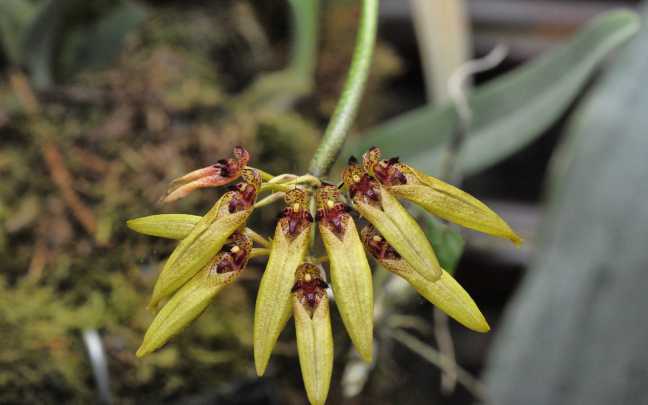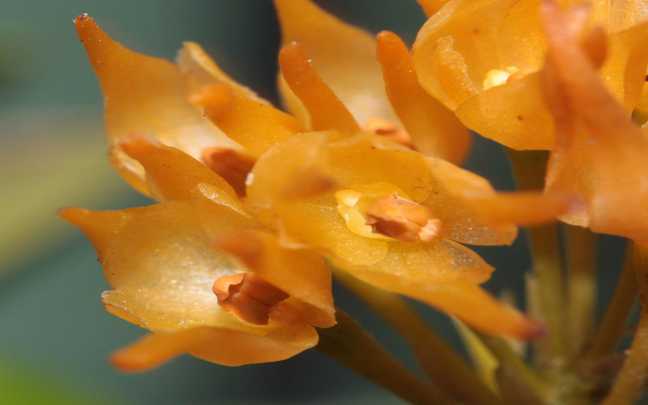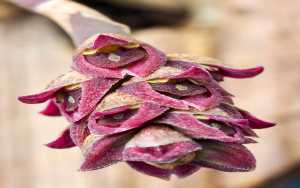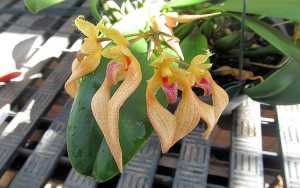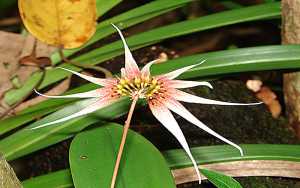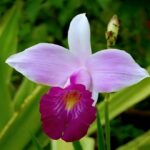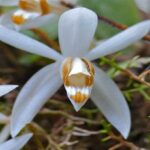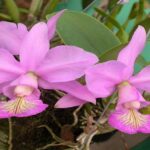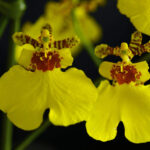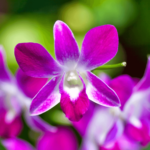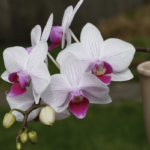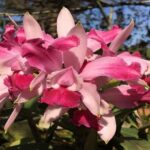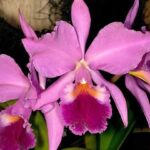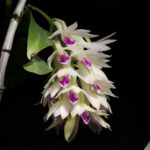Bulbophyllum orchids form the largest genus in the orchid family, currently composed of over 2000 species.
As there are more than 2000 species, the genus Bulbophyllum had to be divided, now having several subgenera.
Moreover, this genus is considered the second-largest genus of flowering plants in the world, second only to Astragalus.
They were accepted in the year 1822 when Louis-Marie Aubert Du Petit-Thouars proposed the genus in Histoire Particulière des Plantes Orchidées Table 3 of the species of orchids.
But that’s just a curiosity; you don’t need to memorize anything. What’s more important to know is that this genus mainly comprises epiphytic and rupicolous species.
Learn How to Achieve Super Blooms on Your Orchids
🛑 If you love orchids and you're tired of not being able to make them bloom...
Then, know that thousands of beginner growers are achieving beautiful flowers on their orchids by following this method.
Click the button below to have beautiful orchids with show-worthy flowers every year. ⤵
Where Are They Found?
The vast majority of species are found in Asia, in various different countries, such as:
- Malaysia
- Indonesia (Standouts: Borneo, Sumatra, Sulawesi, Java)
- New Guinea
- Australia
- Among several other countries
New Guinea is probably the place with the most species, with an estimated 600, considered the dissemination point of this genus.
Besides being found in Asia, they can also be found in America and Africa.
And before we continue, don’t forget, the name of this genus is written as bulbophyllum.
Therefore, any of these versions below is incorrect:
- bulbophillum
- bulbofilum
- bulbophylum
- bulbophilum
Characteristics
These are some characteristics that bulbophyllum orchids possess.
But it’s important to remember that due to the abundance of species in this genus, some characteristics may not apply to all species.
Regarding their leaves, they can be very small or very large.
Some are only a few centimeters long, while others are nearly a meter long.
There are also orchids that have lost all or almost all of their leaves.
And those that live in drier locations usually have thicker leaves, enabling them to store more water.
With their flowers, the same happens:
- Some have minuscule flowers, less than 1 cm in size (0,4 inch)
- Others have flowers that can reach up to 30 cm (11,8 inch).
Their flowers are short-lived, usually lasting for a week, and most of them have aromas.
But these aromas are not always pleasant.
This is because some bulbophyllum orchids are pollinated by flies and insects.
For example, bulbophyllum fletcherianum is one of the smelliest species in this genus.
See the description Pablo Heller gave for this orchid.
This genus of exotic shapes is famous for its unpleasant perfumes. I have seen other species with odors similar to urine, blood, feces, and carrion. But nothing compares to Bulbophyllum fletcherianum. What a disgusting experience.
Source: Pablo Heller
And to attract them, they emit a smell of decomposing carcass.
Aside from these bulbophyllum, there are also those that emit a pleasant odor; these are the majority of cultivated species in this genus.
To learn more about the pollination of bulbophyllum, visit:
- https://www.researchgate.net/publication/275834142_Pollination_of_bactrocerophilous_Bulbophyllum_Orchids
- https://figshare.com/articles/The_pollination_biology_of_Bulbophyllum_species_from_Peninsular_Malaysia/4696873
Now, let’s talk a bit more about cultivating this giant and incredible species.
Bulbophyllum Orchids – How to Cultivate
It is necessary to emphasize that since this genus is very large, it is not possible to provide a one-size-fits-all cultivation guide for these species.
Because, as mentioned earlier, the Bulbophyllum orchid is found on several continents and in various countries.
Thus, while some species live in places with abundant water and humidity, others live in drier places, while some tolerate strong sunlight, others do not.
Recommended for you:
That’s why below you will find out how to identify what your orchid needs.
1 – The Most Important Tip
Find out what your orchid’s natural habitat is and try to mimic it.
If your orchid lives in a humid and hot forest, it will enjoy humidity and higher temperatures.
If it lives in a desert, it will prefer low humidity and less water.
You will typically find this information where you bought your orchid.
About substrates, choose those that will help your orchid the most.
For example, if your orchid is used to being in a humid place, choose a soil that absorbs more water so that it stays moist.
To learn more about taking care of your orchid, I recommend that you read the two articles below:
But if you want to learn more detailed tips on how to care for this orchid, keep reading.
2 – Lighting and Watering
These are two very important factors if you want to cultivate your bulbophyllum well.
First, let’s find out if your orchid is receiving too much or too little sun.
- If it has more yellowish leaves than normal, it is receiving too much sun.
- And if the leaves are greener than usual, it is receiving too little sun.
Now let’s check if they are being watered properly:
- Firm roots in a healthy green color, they are receiving the correct watering.
- Gray or white roots, they are receiving too little water
- Rotten roots, usually gray, soft, and with a bad smell, they are receiving too much water
3 – Fertilization and Ventilation
Regarding fertilization, in this case, it is recommended to use a balanced fertilizer such as NPK 20 20 20 and check if:
- Salt is accumulating in the pot
If this is happening, you are fertilizing excessively.
As for ventilation, usually, just avoid placing your orchid in a very enclosed place or in very strong winds.
4 – How to Plant Bulbophyllum
As there are many species in this genus, it is difficult to create a step-by-step guide that applies to all.
So, when planting your bulbophyllum, the first thing you should ask yourself is where this orchid lives in its natural habitat.
Is it an orchid that lives on trees, on the ground, or on rocks?
After answering that, you can choose where it will be planted:
- Lives on trees: usually plastic pots, terracotta pots, or even cachepots are great options, or if you prefer, you can plant them on trees.
- Lives on the ground: you can plant it on the ground with plenty of organic compost or you can plant them in plastic or terracotta pots depending on the species. Consider that terrestrial orchids are usually large, so the pot will have to be bigger.
- Lives on rocks: try to plant them as they are in their natural habitat, that is, in the humus that accumulates on the rocks. But it is unlikely that you have this type of orchid.
Now that you have chosen the best place to plant your orchid, look for guides on how to plant an orchid in that location.
For example, if you chose to plant it on a tree, look for how to plant orchids on trees.
Do You Want to Learn How To Keep Your Orchids Healthy And Ready to Bloom Every Year?
So, I prepared a complete guide, step by step and illustrated, that will show you:
• The secrets to getting beautiful flowers every year
• How to fight and identify pests and diseases on your orchids
• THE MAGIC SUBSTANCE for orchids and how to use it
• And much, much more.
The great news is that the manual is now available at a super discount!!
But beware, it's only for the first buyers.
Click on MORE INFORMATION below and discover the secrets to show-worthy flowers. 👇
Some Bulbophyllum Species
With over 2000 species, this genus has some very interesting plants.
Some stand out for their beauty, others for their popularity.
Below, you will read about some of the main species of the bulbophyllum genus.
Bulbophyllum medusae (medusa orchid)
Described in the year 1961, bulbophyllum medusae is known as the medusa orchid.
It is an epiphytic orchid native to countries like Thailand and the Philippines.
Its major difference from other orchids is its flowers that resemble the medusa from Greek mythology.
Each flowering generates 30 to 100 small flowers, usually white and fragrant.
To cultivate them, follow the tips below:
- Medium lighting
- Warmer temperatures, between 24°C to 26°C (75°F to 79°F) during the day and 19°C to 21°C (66°F to 70°F) at night.
- 50% to 60% humidity, it can be a bit higher too.
- Water regularly before the soil dries out
- Fertilize every 3 or 4 waterings.
Bulbophyllum miniatum (saltatorium)
Bulbophyllum miniatum is the popularly known name in Brazil, the correct name is bulbophyllum saltatorium.
This plant is native to countries in Central Africa.
They are usually found in forests up to 800 meters (2624.6 feet) above sea level.
Also known as dancing bulbophyllums, they were discovered in 1837.
Now, as for their flowers:
- They are very small, can be compared to a mini orchid.
- They appear in autumn and last about 10 days.
To cultivate bulbophyllum miniatum, follow the tips below:
- Temperature ranging from 16°C to 29°C (61°F to 84°F)
- Fertilize every 2 weeks on average
- Water on average 1 or 2 times a week in the warmer months and decrease during winter. Do not let the soil dry out.
- Medium light, about 50 to 70% shading.
- Ensure good ventilation
- Medium / high humidity.
Bulbophyllum ambrosia
Bulbophyllum ambrosia was discovered in 1909 by Rudolf Schlechter. It is mainly found in Asia in Chinese provinces, living in forests at altitudes ranging from 300 to 1300 meters (118 to 511,8 feet).
Its flowering period occurs during winter and produces flowers that last about 15 days.
These flowers are fragrant and are very small, not exceeding 2 centimeters in length.
To learn how to cultivate your bubophyllum ambrosia, follow the tips below:
- Lighting: it cannot be exposed to direct light, provide medium light
- Temperature: in summer between 15°C and 29°C (59°F to 84°F) and in winter between 7°C and 18°C (44.5°F to 64.5°F).
- Humidity: medium or high, between 70% and 80%
- Watering: water before the soil dries out, but be careful not to soak your plant.
- Fertilizer: NPK 20 20 20 at 1/4 or 1/2 strength every week.
Bulbophyllum Careyanum
Bulbophyllum careyanum is one of the most famous orchids in the bulbophyllum genus.
It was described in 1826 and is an epiphytic species native to various Asian countries such as:
- Himalayas
- Nepal
- Thailand
- Vietnam
- Among several others
Its flowering period is between September and December, producing non-fragrant flowers that last up to 25 days.
These flowers come in shades of brown, red, or yellow.
To cultivate bulbophyllum careyanum, follow the tips below:
- Water once a week in cooler periods and 2 or 3 times a week in warmer periods.
- Temperature between 15°C and 25°C (59°F and 77°F)
- About 70% shading (indirect light)
- Medium / high humidity
If you have a problem with your plant’s humidity, see this article.
Conclusion
This was the complete guide on how to care for bulbophyllum orchids, the largest genus among orchids.
If you want to know more about orchids, see the articles below:
Now it’s your turn, if you liked this article, help us reach more people, share it on your social networks.


